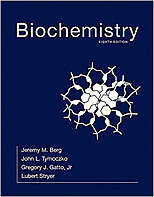
Biochemistry
Berg, Jeremy M.; Tymoczko, John L.; Gatto, Jr., Gregory J.; Stryer, Lubert
8 ed.
New York: W.H. Freeman and Company, 2015
 |
Biochemistry Berg, Jeremy M.; Tymoczko, John L.; Gatto, Jr., Gregory J.; Stryer, Lubert 8 ed. New York: W.H. Freeman and Company, 2015 |
44 termes
| Na+ ion n. |
|
| N-acetylglucosamine phosphotransferase n. |
|
| N-acetylglutamate n. (NAG) |
|
| N-acetylglutamate synthase n. |
|
| N-acetyl-L-phenylalanine p-nitrophenyl ester n. |
|
| N-acetylneuraminate n. |
|
| NADH-cytochrome b5 reductase n. |
|
| NAG n. (N-acetylglutamate) |
|
| Nat+-K+ ATPase n. |
|
| Nat+-K+ pump n. |
|
| natural product n. |
|
| natural substrate n. |
|
| negative free-energy n. |
|
| negatively charged amino acid n. |
|
| neurological disease n. |
|
| next-generation sequencing n. (NGS) |
|
| N-formylmethionine n. (fMet) |
|
| NF-?B n. |
|
| N-glycolylneuraminate n. |
|
| NGS n. (next-generation sequencing) |
|
| NHEJ n. (nonhomologous end joining) |
|
| N-linkage n. |
|
| N-linked sugar n. |
|
| N-methylmesoporphyrin n. |
|
| NMR spectroscopy n. (nuclear magnetic resonance spectroscopy) |
|
| NOE n. (Nuclear Overhauser effect) |
|
| noncarbohydrate precursor n. |
|
| noncoenzyme vitamin n. |
|
| noncompetitive inhibitor n. |
|
| nonconservative substitution n. |
|
| noncovalent assembly n. |
|
| nonoverlapping code n. |
|
| nonribosomal peptide n. |
|
| nonshivering thermogenesis n. |
|
| nonspecific cation channel n. |
|
| nonspecific DNA n. |
|
| non-Watson-Crick base pair n. |
|
| NPY n. (neuropeptide Y) |
|
| nuclear hormone receptor n. |
|
| nuclear Overhauser effect n. (NOE) |
|
| nucleoside 5'-phosphate n. |
|
| nucleotide biosynthesis n. |
|
| nucleotide triphosphate n. |
|
| nucleotide-binding site n. |
|